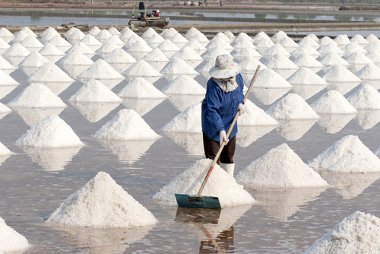We all know that the Water it is a primordial substance for the maintenance of life. However, for it to be consumed by us, it must be drinking, that is, it has the following characteristics:
absence of impurities;
presence of mineral salts;
absence of microorganisms;
presence of fluoride.
An alarming detail is that drinking water is becoming increasingly scarce. It is very common to see in the news that many regions are no longer having easy access to this valuable resource. People often ask themselves: why is there a lack of water if we have so many rivers, dams, lakes, etc.? The answer is the low level of awareness of people, in general, about the issue of waste and misuse of water.
It is also important to know that, in fact, water from a river, lake, dam, for example, cannot be used by a human being for ingestion (drinking) because it can present various types of impurities arising from inconsequential human actions (industrial and Sewer). Thus, much of the water is polluted to a greater or lesser degree.
Due to the present pollution, it is necessary to treat the water before it is consumed by the population. But after all, do you know how this process is carried out? In this text, we will learn in detail how this resource is handled.
Water treatment involves several steps. Are they:
fundraising: Initially, water is collected from a river, lake or dam, for example, through a pipeline (set of pipes), which brings the water to a tank at the treatment plant. Upon reaching the treatment plant, the water passes through large grids, which prevent large materials from remaining in the water, such as dead animals.
Coagulation: The water that is stored in the tank receives the addition of a salt called aluminum sulphate or ferric sulphate. These compounds form a gelatinous substance that favors the formation of flakes (joining impurities into the gelatinous substance).
flocculation: In this step, the water is directed to another tank, where a polymer that will be added will favor the flakes formed in the coagulation step to come together and form even larger flakes and heavier.
Decantation: After flocculation, the water is directed to a new tank, where it will remain at rest so that the flakes formed are decanted to the bottom of the tank, as they are denser than the Water.
filtration: after decanting, the water passes through a large filter formed by sand, activated carbon and gravel. At this stage, impurities that did not adhere to the flakes are retained in the filter, in addition to deodorizing the water due to the presence of activated carbon.
Fluoridation: In this step, an amount of acid with fluorine, Fluosilicic Acid (H) is added to the water2SiF6), to help reduce caries in the population.
Chlorination: In addition to the addition of Fluorine, Chlorine is also added to water, in the form of salt, in order to eliminate the microorganisms present.
Correction of pH or water acidity: At this stage, calcium hydroxide is added to the water to reduce the acidity of the medium.
Storage: Finally, water is stored in a reservoir and distributed to homes.
By Me. Diogo Lopes Dias


